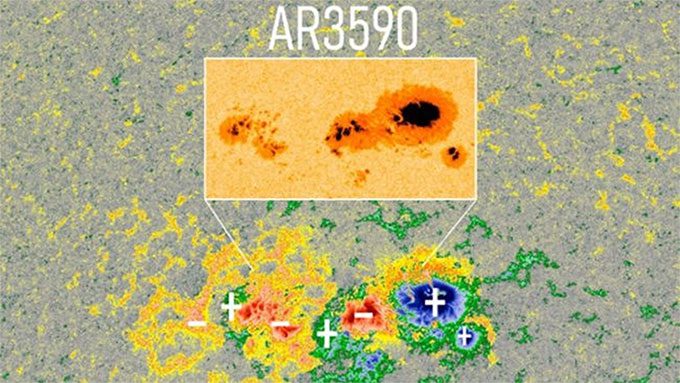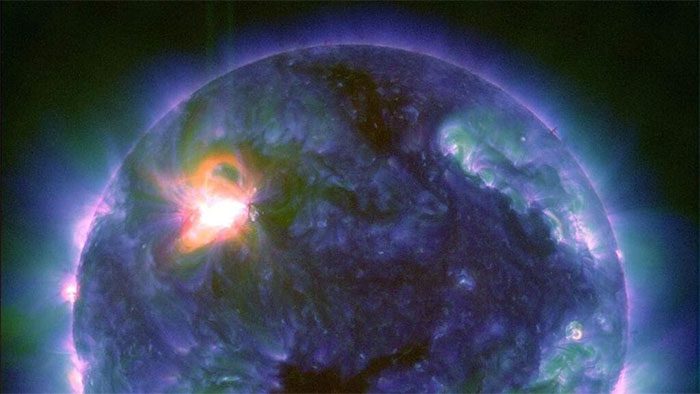We are in the “crosshairs” of multiple CME eruptions, along with the threat of the strongest solar storm in 6 years.
Sunspots are the direct cause of solar storms, threatening weather on Earth and causing serious issues for electrical grids and satellites in orbit.

The giant sunspot AR3590 is heading directly towards Earth, putting us at risk of experiencing intense solar storms in the near future (Photo: Spaceweather).
According to a recent warning from Spaceweather, a huge sunspot named AR3590 is even expanding to a larger size and is heading straight towards Earth.
This places us in the “crosshairs” of multiple CME eruptions, along with the risk of experiencing the strongest solar storm in 6 years.
According to Live Science, sunspot AR3590 first appeared on the side of the Sun facing Earth on February 18 and has quickly expanded into a dark area several times wider than our planet.
On February 21, AR3590 produced a pair of solar flares – also known as solar flares – of class X (the strongest type), with intensities of X1.7 and X1.8. On February 22, this sunspot released another flare with an intensity of X6.3. This was the strongest solar flare in over 6 years.
It is worth noting that all three flares caused temporary radio blackouts on Earth, but that was before they triggered any CME eruptions.

Sunspot AR3590 emitted the strongest solar flare in 6 years on February 22. (Photo: NASA/SDO).
Scientists warn that if any of these flares are accompanied by CME eruptions directed at Earth, they could create severe geomagnetic storms.
The consequences could disrupt Earth’s magnetic field, and solar radiation could even affect infrastructure on land, causing auroras and leading to communication losses with satellites, resulting in damages amounting to trillions of dollars.
The recent increase in size and frequency of sunspots, as well as geomagnetic storms, is a clear sign that the Sun is approaching its “explosive” peak in the 11-year cycle known as solar maximum.
Scientists currently believe that solar maximum could occur in the first half of this year, much sooner than initially predicted by experts. It may also be significantly stronger than originally anticipated by scientists.
The impact of solar storms can lead to some rare phenomena. For example, in 1972, U.S. military pilots during the Vietnam War flying over Haiphong Harbor observed 24 underwater mines exploding for unknown reasons.
A 2018 study concluded that this explosion was caused by a strong solar storm striking Earth.
Solar storms also create a fascinating natural phenomenon known as auroras. This phenomenon is produced by particles from solar storms as they accelerate along Earth’s magnetic field to higher latitudes and descend into the upper atmosphere.
There, particles from the solar storm interact with atmospheric matter, creating dazzling light displays in the sky that can be seen with the naked eye.




















































